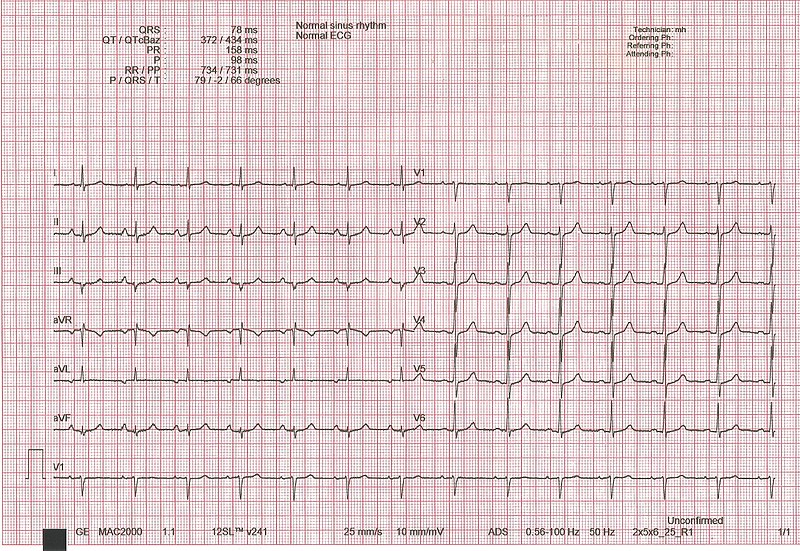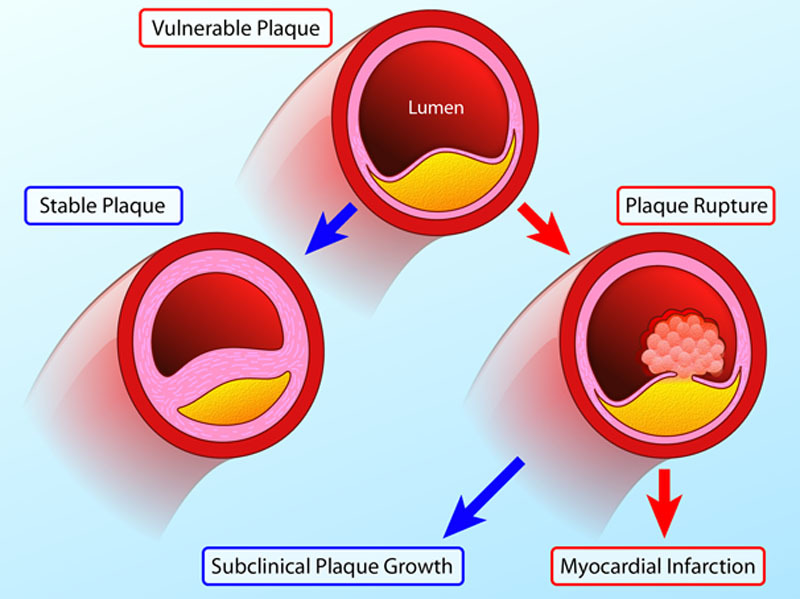Playlist
Show Playlist
Hide Playlist
Myocardial Infarction
-
Slides IschemicHeartDisease CardiovascularPathology.pdf
-
Download Lecture Overview
00:01 What kind of changes that you are going to find on your EKG. Well, we will get into that here. Let us talk about transmural first. If it is transmural, what kind of artery or arteriole? It is going to be your artery and it is undergoing permanent type of obstruction. 00:16 What are you going to find on your EKG? You are going to find a type of change, which is known as a STEMI, an ST-elevation myocardial infarction, left anterior descending branch. 00:28 Take a look at where the occlusion is taking place. What part of the heart is that? You see that right there? That is the anteroseptal right. So you have your interventricular septum and then towards your apical. What leads would these be? Actually the second time, but I am walking you through all leads here, then keep repeating myself. So we have the following. 00:52 We are supplying the, who is? The left anterior descending is supplying the interventricular septum, is it not? And so, therefore, it would be V1, V2 and for exam purposes also understand that you are going to supply the anteroapical. What leads would those be? V3, V4 good. Welcome to left anterior descending. Transmural, what kind of infarction? ST elevation in which leads? V1 through V4. I am hoping that you have done your precordial leads and you know how to place them. Next, permanent occlusion of left circumflex branch. Take a look at where you are here. Once again, it is an artery. What kind of myocardial infarction? STEMI. Next, what kind of leads that you are looking at? What is over here on your left lateral side? How about V5, V6? What else might you find? Lead 1, which augment the lead. Please do not say aVR. That is aVL, isn't it? Okay. So those are places that you do expect to find an ST elevation if it is left circumflex. And then if it is right coronary artery, where might you be here? Well, this is your II, III, aVF? That will be the inferior portion of the heart. Let us move on. Let us take a look at nontransmural. 02:13 If it is nontransmural, then these are the different types of issues that you are looking at. We have transient/partial obstruction, point number one, subendocardial infarction. 02:22 Global hypotension, what does that mean? It means overall the blood pressure is decreasing in your patient. Thus, you will find circumferential. Look for that description. Why is it happening? Overall the body. Let us say that there is massive type of hypovolemia due to massive hemorrhage. Is that global hypotension? Of course, it is. What part of the heart is most susceptible to hypoxia? It is the subendocardium, but now it is circumferential. Small intramural, these are microinfarcts. Now the two that you want to pay attention to, for sure would be the first and second one with subendocardial, either you have a partial obstruction or you have global with circumferential. All, however, would be nontransmural.
About the Lecture
The lecture Myocardial Infarction by Carlo Raj, MD is from the course Ischemic Heart Disease: Basic Principles with Carlo Raj.
Included Quiz Questions
What describes a nontransmural infarct?
- Microinfarct
- Permanent occlusion of left anterior descending branch
- Permanent occlusion of left circumflex branch
- Permanent occlusion of right coronary artery
- Permanent occlusion of posterior descending branch
Which of the following anatomical descriptions of infarction regarding non-ST-elevation myocardial infarction (NSTEMI) and ST-elevation myocardial infarction (STEMI) is most ACCURATE?
- NSTEMI is subendocardial.
- STEMI is epicardial.
- STEMI is endocardial.
- NSTEMI is transmural.
- NSTEMI is epicardial.
Which leads represent areas perfused by the right coronary artery?
- II, III, aVF
- V1-V4
- V5, V6, I, aVL
- II, III, aVL
- V2, V3
Customer reviews
5,0 of 5 stars
| 5 Stars |
|
5 |
| 4 Stars |
|
0 |
| 3 Stars |
|
0 |
| 2 Stars |
|
0 |
| 1 Star |
|
0 |








